Abstract
Six pigeons responded in fifty-six conditions on a concurrent-chains procedure. Conditions included several with equal initial links and unequal terminal links, several with unequal initial links and equal terminal links, and several with both unequal initial and terminal links. Although the delay-reduction hypothesis accounted well for choice when the initial links were equal (mean deviation of .04), it fit the data poorly when the initial links were unequal (mean deviation of .18). A modification of the delay-reduction hypothesis, replacing the rates of reinforcement with the square roots of these rates, fit the data better than either the unmodified delay-reduction equation or Killeen's (1982) model. The modified delay-reduction equation was also consistent with data from prior studies using concurrent chains. The absolute rates of responding in each terminal link were well described by the same hyperbola (Herrnstein, 1970) that describes response rates on simple interval schedules.
Keywords: choice, delay-reduction hypothesis, concurrent-chains schedule, Herrnstein's hyperbola, Killeen's model, generalized matching law, variable-interval schedules, key peck, pigeons
Full text
PDF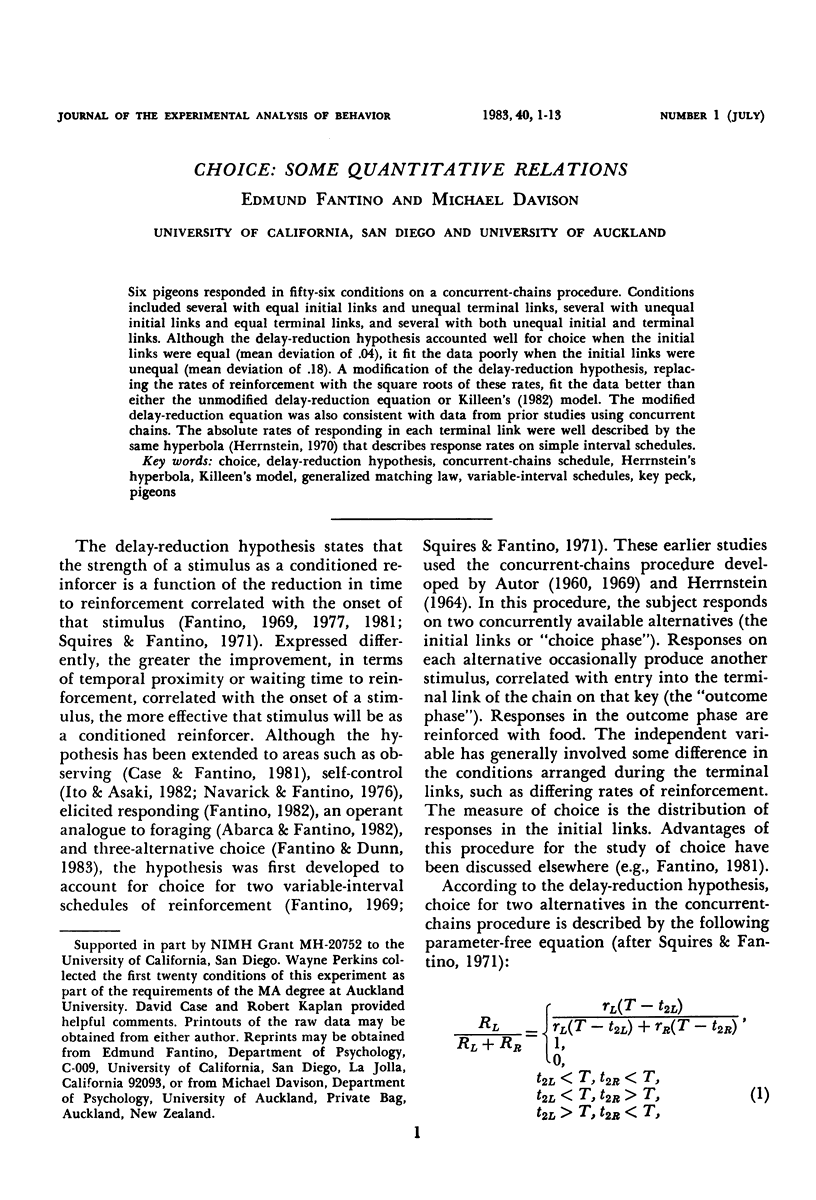
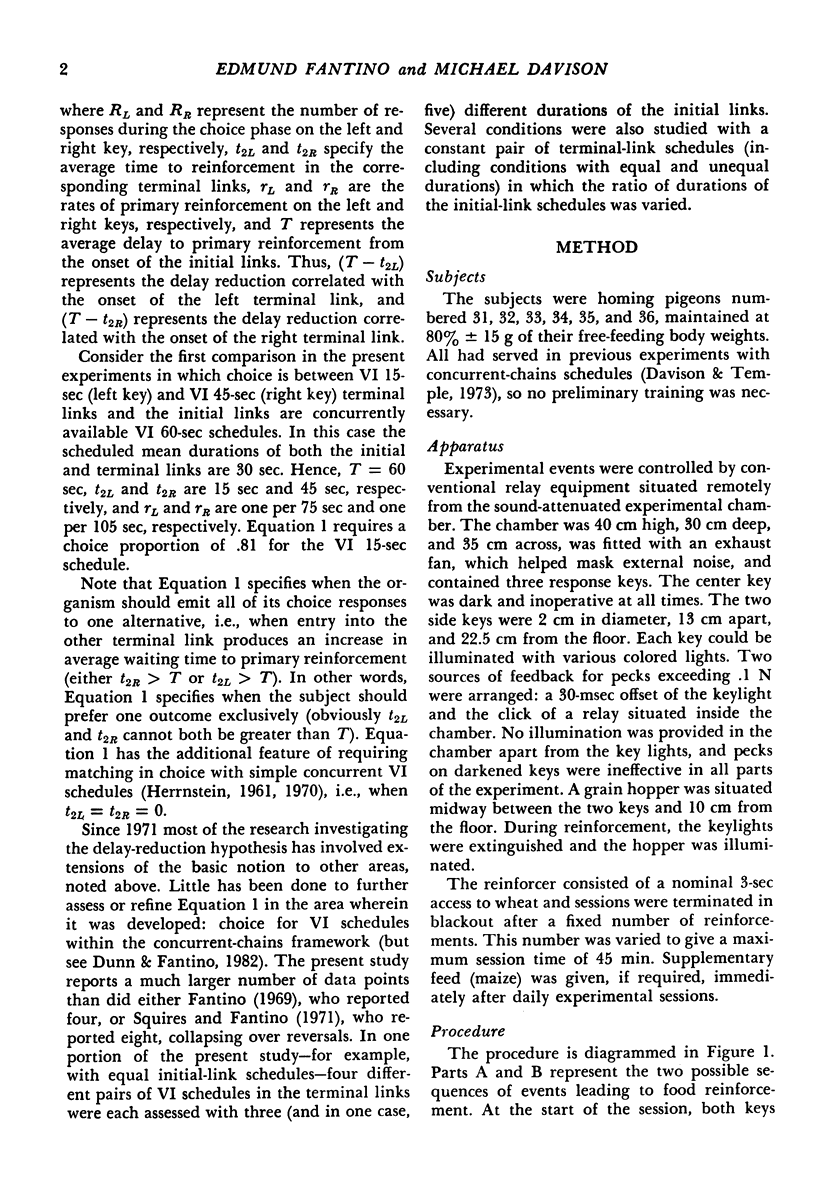
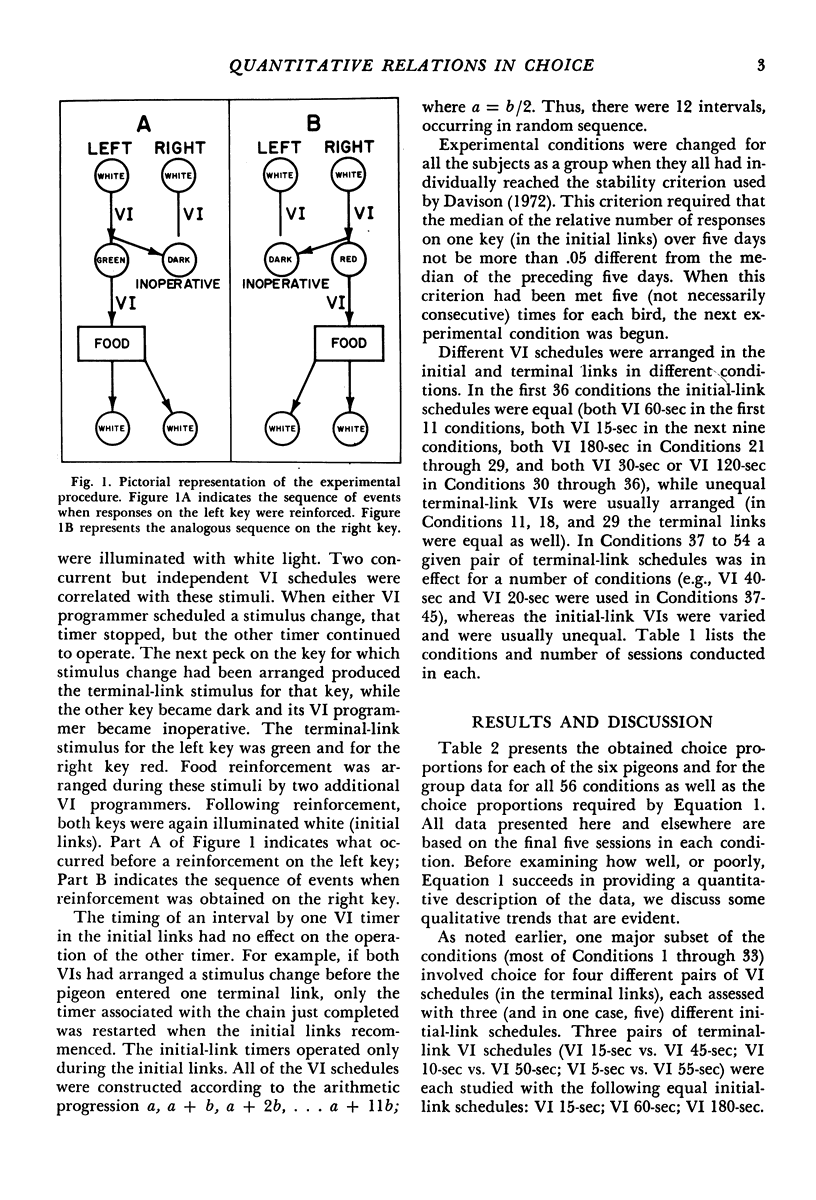
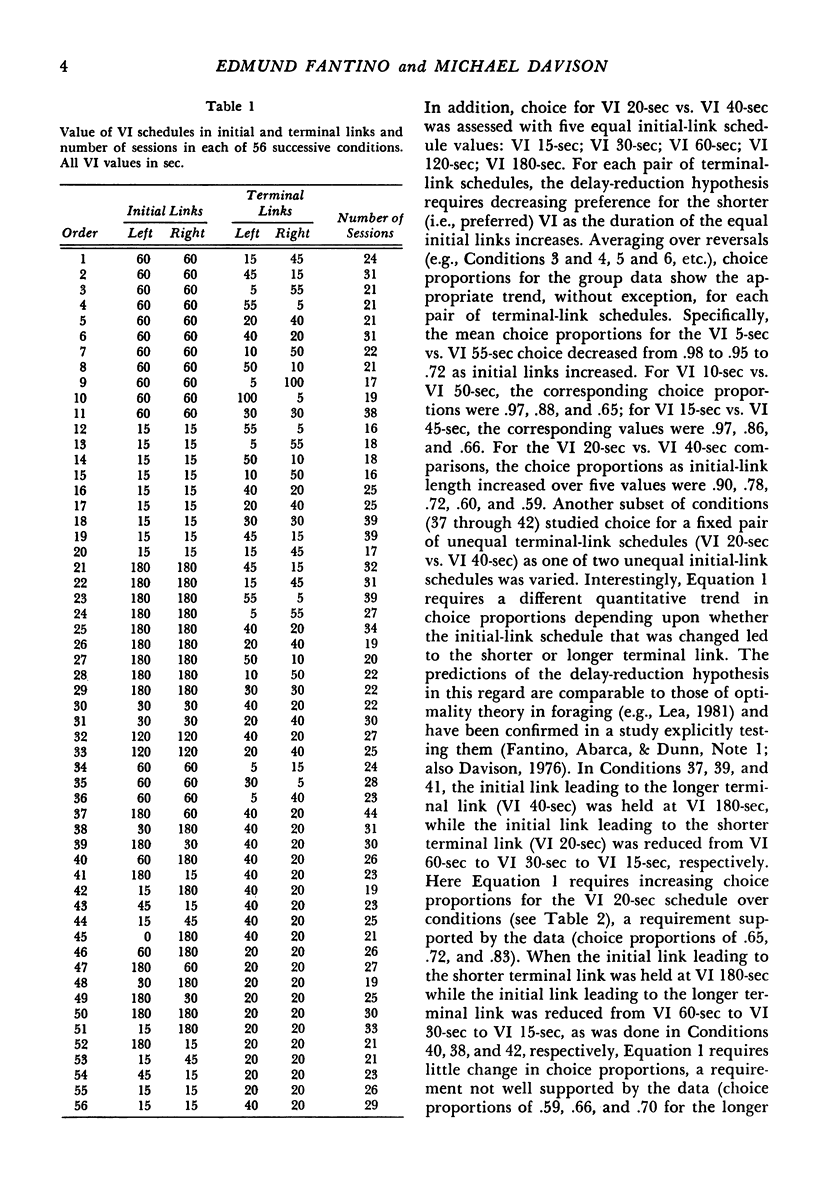
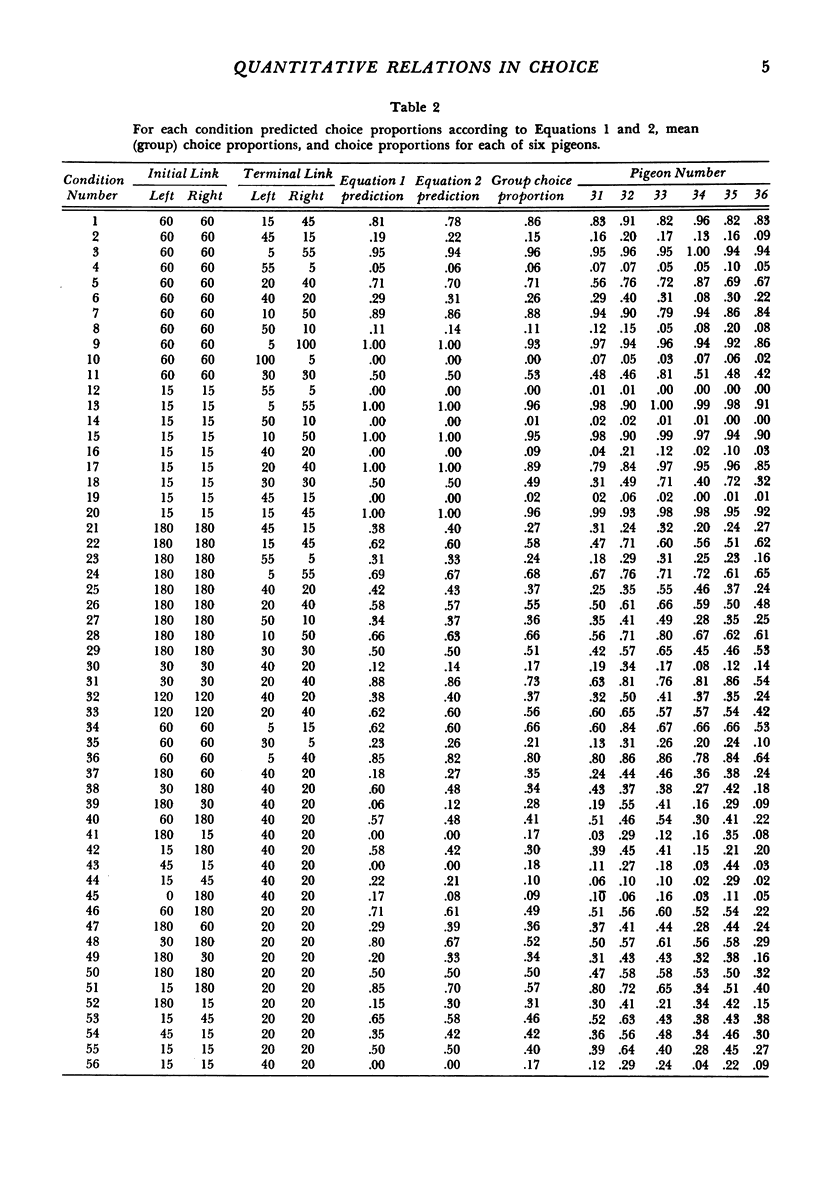
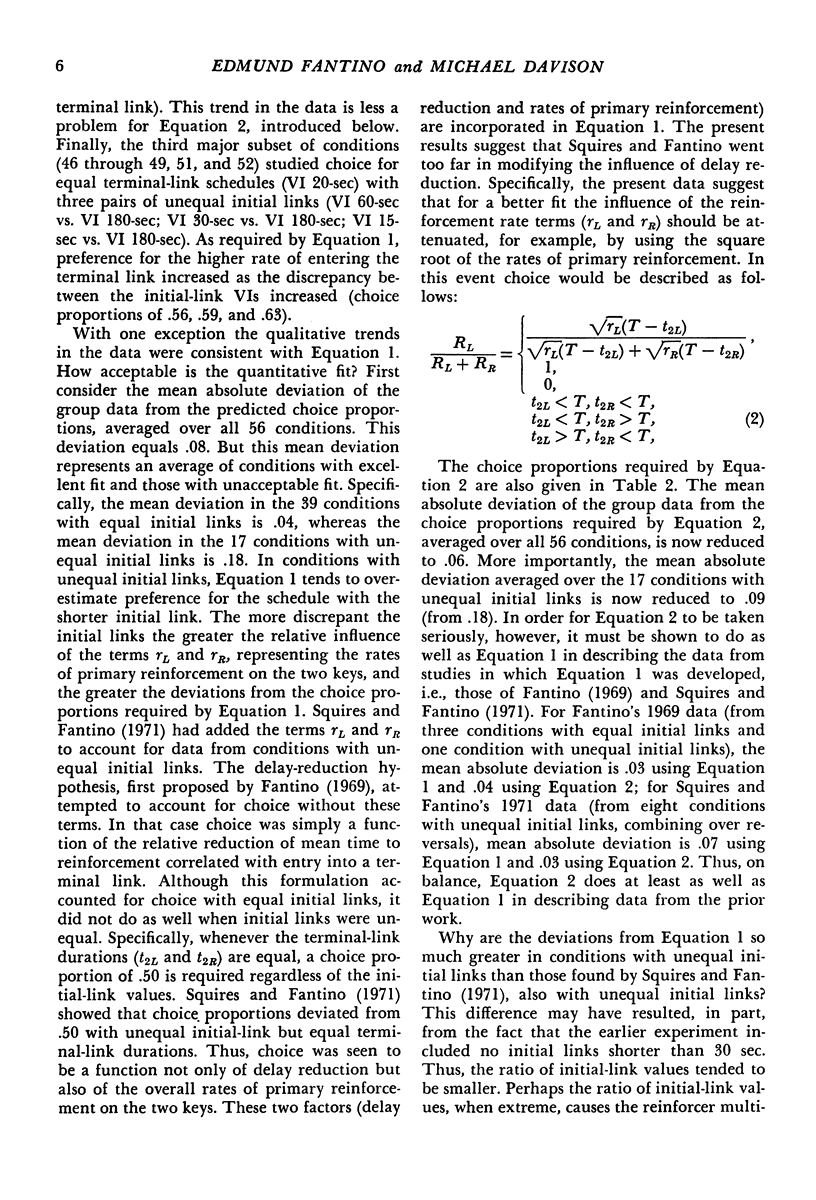
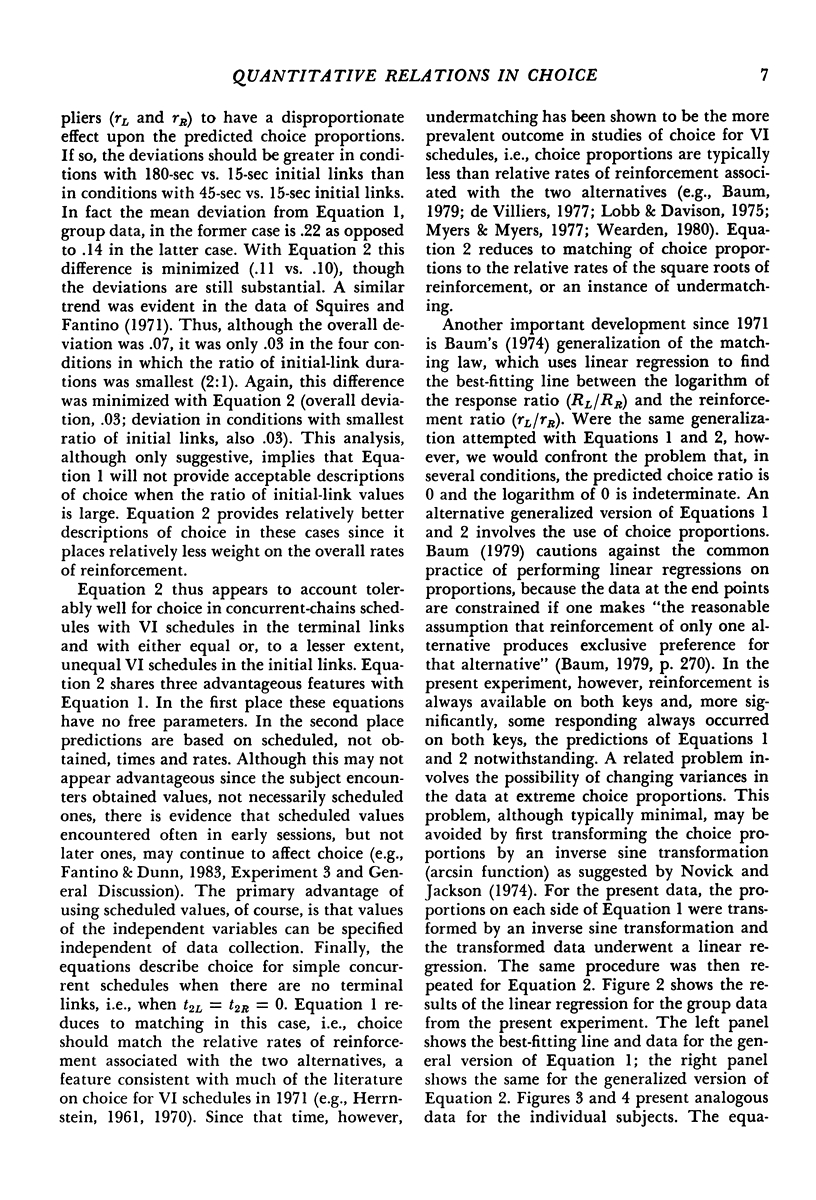
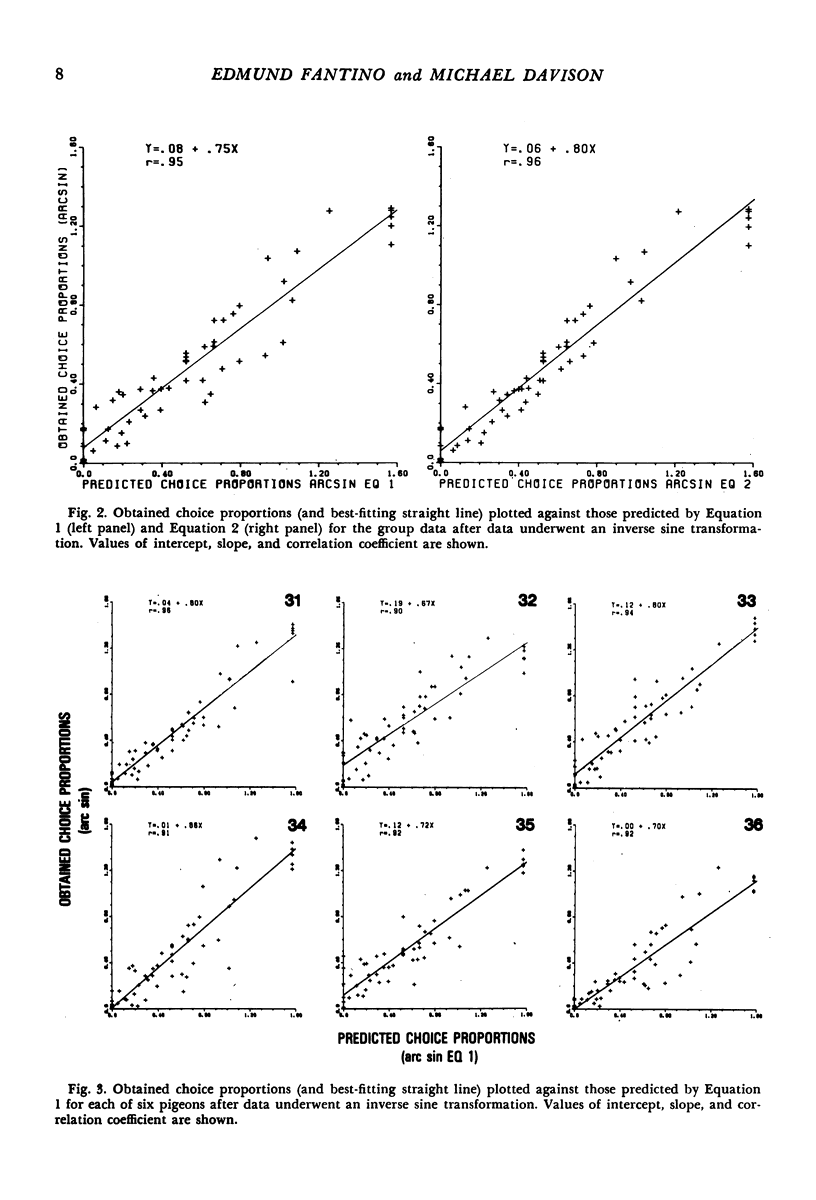
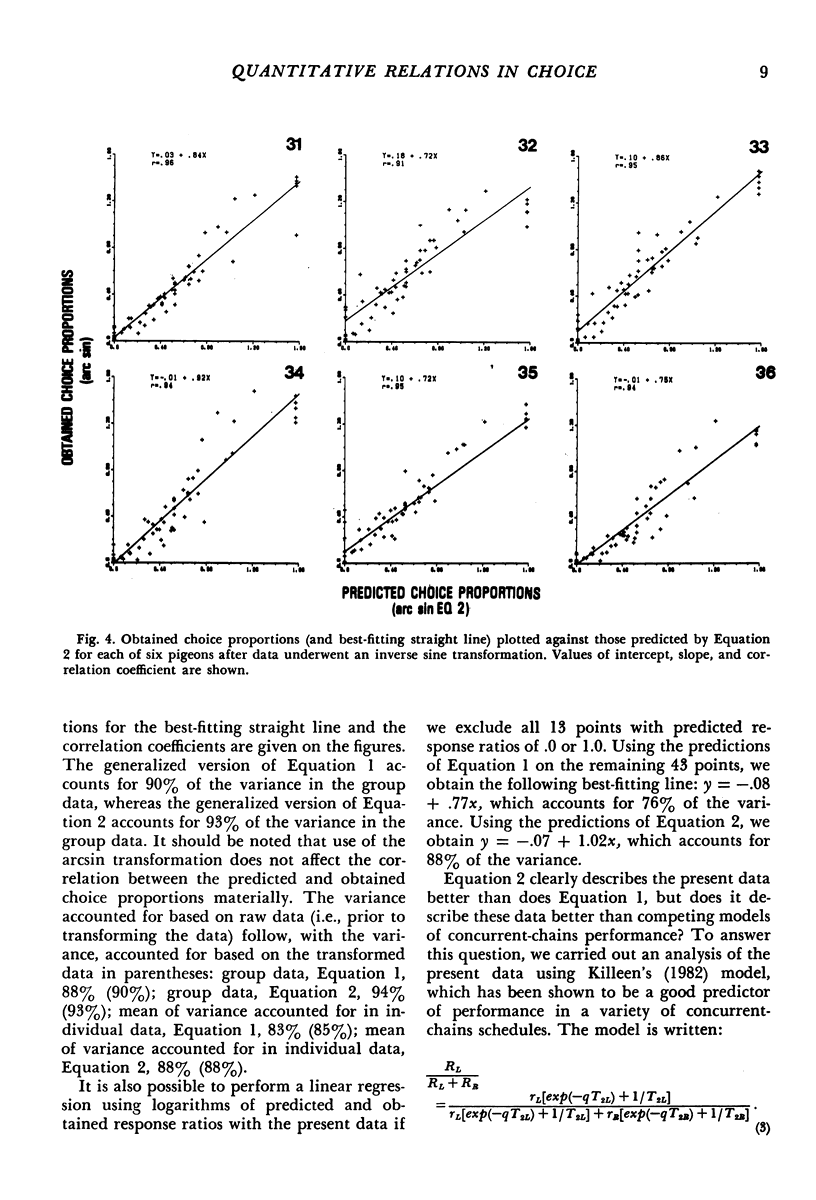
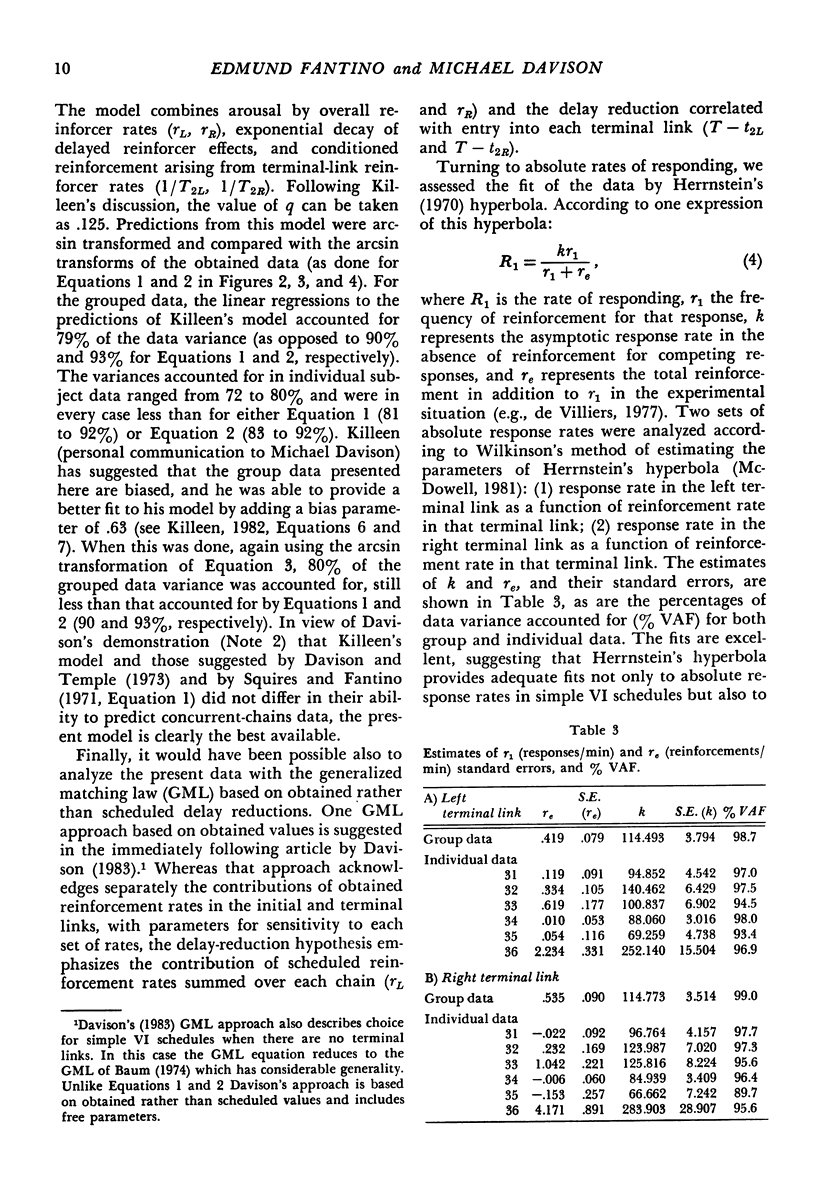

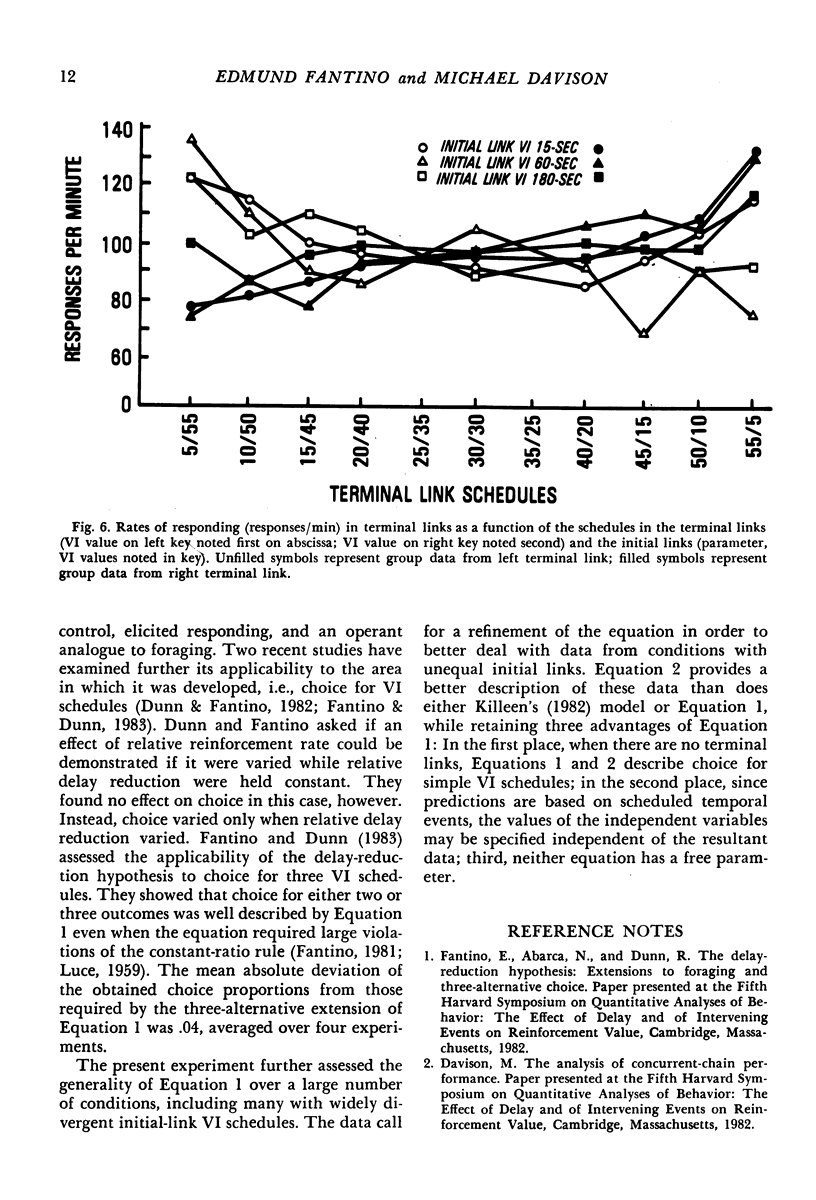
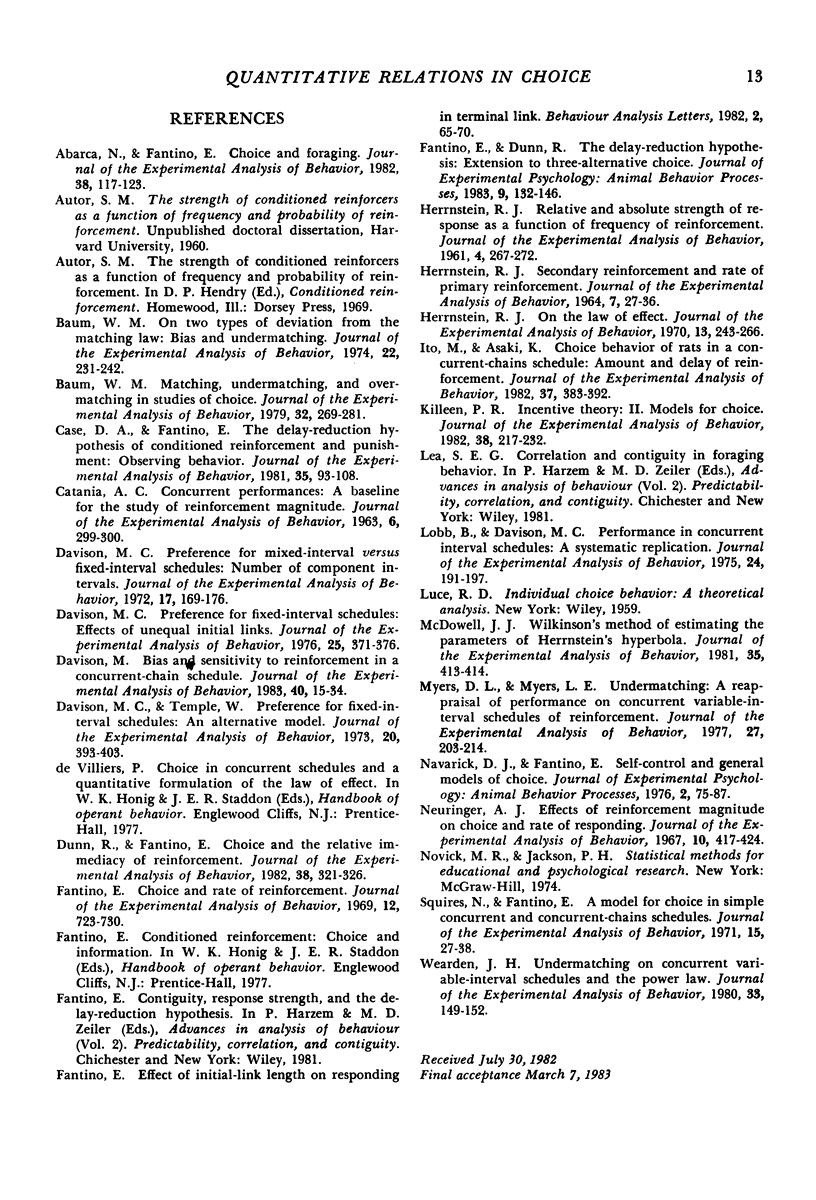
Selected References
These references are in PubMed. This may not be the complete list of references from this article.
- Abarca N., Fantino E. Choice and foraging. J Exp Anal Behav. 1982 Sep;38(2):117–123. doi: 10.1901/jeab.1982.38-117. [DOI] [PMC free article] [PubMed] [Google Scholar]
- Baum W. M. Matching, undermatching, and overmatching in studies of choice. J Exp Anal Behav. 1979 Sep;32(2):269–281. doi: 10.1901/jeab.1979.32-269. [DOI] [PMC free article] [PubMed] [Google Scholar]
- Baum W. M. On two types of deviation from the matching law: bias and undermatching. J Exp Anal Behav. 1974 Jul;22(1):231–242. doi: 10.1901/jeab.1974.22-231. [DOI] [PMC free article] [PubMed] [Google Scholar]
- CATANIA A. C. Concurrent performances: a baseline for the study of reinforcement magnitude. J Exp Anal Behav. 1963 Apr;6:299–300. doi: 10.1901/jeab.1963.6-299. [DOI] [PMC free article] [PubMed] [Google Scholar]
- Case D. A., Fantino E. The delay-reduction hypothesis of conditioned reinforcement and punishment: Observing behavior. J Exp Anal Behav. 1981 Jan;35(1):93–108. doi: 10.1901/jeab.1981.35-93. [DOI] [PMC free article] [PubMed] [Google Scholar]
- Davison M. C. Preference for fixed-interval schedules: effects of unequal initial links. J Exp Anal Behav. 1976 May;25(3):371–376. doi: 10.1901/jeab.1976.25-371. [DOI] [PMC free article] [PubMed] [Google Scholar]
- Davison M. C. Preference for mixed-interval versus fixed-interval schedules: number of component intervals. J Exp Anal Behav. 1972 Mar;17(2):169–176. doi: 10.1901/jeab.1972.17-169. [DOI] [PMC free article] [PubMed] [Google Scholar]
- Davison M. C., Temple W. Preference for fixed-interval schedules: an alternative model. J Exp Anal Behav. 1973 Nov;20(3):393–403. doi: 10.1901/jeab.1973.20-393. [DOI] [PMC free article] [PubMed] [Google Scholar]
- Davison M. Bias and sensitivity to reinforcement in a concurrent-chain schedule. J Exp Anal Behav. 1983 Jul;40(1):15–34. doi: 10.1901/jeab.1983.40-15. [DOI] [PMC free article] [PubMed] [Google Scholar]
- Dunn R., Fantino E. Choice and the relative immediacy of reinforcement. J Exp Anal Behav. 1982 Nov;38(3):321–326. doi: 10.1901/jeab.1982.38-321. [DOI] [PMC free article] [PubMed] [Google Scholar]
- Fantino E. Choice and rate of reinforcement. J Exp Anal Behav. 1969 Sep;12(5):723–730. doi: 10.1901/jeab.1969.12-723. [DOI] [PMC free article] [PubMed] [Google Scholar]
- HERRNSTEIN R. J. Relative and absolute strength of response as a function of frequency of reinforcement. J Exp Anal Behav. 1961 Jul;4:267–272. doi: 10.1901/jeab.1961.4-267. [DOI] [PMC free article] [PubMed] [Google Scholar]
- HERRNSTEIN R. J. SECONDARY REINFORCEMENT AND RATE OF PRIMARY REINFORCEMENT. J Exp Anal Behav. 1964 Jan;7:27–36. doi: 10.1901/jeab.1964.7-27. [DOI] [PMC free article] [PubMed] [Google Scholar]
- Herrnstein R. J. On the law of effect. J Exp Anal Behav. 1970 Mar;13(2):243–266. doi: 10.1901/jeab.1970.13-243. [DOI] [PMC free article] [PubMed] [Google Scholar]
- Ito M., Asaki K. Choice behavior of rats in a concurrent-chains schedule: Amount and delay of reinforcement. J Exp Anal Behav. 1982 May;37(3):383–392. doi: 10.1901/jeab.1982.37-383. [DOI] [PMC free article] [PubMed] [Google Scholar]
- Killeen P. R. Incentive theory: II. Models for choice. J Exp Anal Behav. 1982 Sep;38(2):217–232. doi: 10.1901/jeab.1982.38-217. [DOI] [PMC free article] [PubMed] [Google Scholar]
- Lobb B., Davison M. C. Performance in concurrent interval schedules: a systematic replication. J Exp Anal Behav. 1975 Sep;24(2):191–197. doi: 10.1901/jeab.1975.24-191. [DOI] [PMC free article] [PubMed] [Google Scholar]
- McDowell J. J. Wilkinson's method of estimating the parameters of Herrnstein's hyperbola. J Exp Anal Behav. 1981 May;35(3):413–414. doi: 10.1901/jeab.1981.35-413. [DOI] [PMC free article] [PubMed] [Google Scholar]
- Myers D. L., Myers L. E. Undermatching: a reappraisal of performance on concurrent variable-interval schedules of reinforcement. J Exp Anal Behav. 1977 Jan;27(1):203–214. doi: 10.1901/jeab.1977.27-203. [DOI] [PMC free article] [PubMed] [Google Scholar]
- Neuringer A. J. Effects of reinforcement magnitude on choice and rate of responding. J Exp Anal Behav. 1967 Sep;10(5):417–424. doi: 10.1901/jeab.1967.10-417. [DOI] [PMC free article] [PubMed] [Google Scholar]
- Squires N., Fantino E. A model for choice in simple concurrent and concurrent-chains schedules. J Exp Anal Behav. 1971 Jan;15(1):27–38. doi: 10.1901/jeab.1971.15-27. [DOI] [PMC free article] [PubMed] [Google Scholar]
- Wearden J. H. Undermatching on concurrent variable-interval schedules and the power law. J Exp Anal Behav. 1980 Jan;33(1):149–152. doi: 10.1901/jeab.1980.33-149. [DOI] [PMC free article] [PubMed] [Google Scholar]


